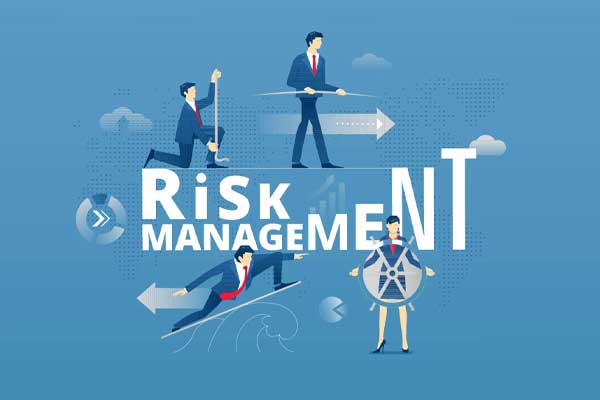If you aim to conduct risk management in your organisation, we bet that you are facing many dilemmas. These confusions are ever-growing, especially regarding implementing and optimising integrated management systems. That is why it is crucial to understand the similarities and differences in risk management between ISO 9001 and ISO 31000. This article will compare and contrast ISO 31000 and ISO 9001.
What is risk management?
Risk management can be described as a process where different activities are coordinated and directed towards controlling all risks in a specific organisation. The process involves identifying, evaluating and prioritising risks to minimise the probability and impacts of unfortunate events while simultaneously maximising the realisation of all growth opportunities.

What is ISO 31000?
ISO 31000 outlines generic principles and guidelines to help organisations establish, implement, maintain and continually improve their risk management framework. The standard is not specific to any industrial sector and can be utilised by a group, individual, association, community, enterprise, private enterprise or public enterprise. There is no specification about when the standard should be applied. Therefore, it is applicable throughout the life-cycle of an organisation and specific for a wide range of activities. It can be applied to assets, services, products, projects, functions, processes, operations, strategies, or even decisions. The purpose of the standard was not to promote uniformity in risk management across different organisations but rather to create a framework that considers the unique needs of a specific organisation. When conducting risk management, the standard considers objectives, operations, structure, context, processes, projects, functions, products, assets or services.
Structure of ISO 31000
The key clauses of ISO 31000 are principles, framework and processes. In clause 3, the principles of risk management are described. To have an effective risk management system in place, companies must adhere to the 11 principles of clause 3, namely:
- Risk management should create and protect value.
- Risk management is a vital part of all organisational processes.
- Risk management should be a part of every decision-making process.
- Risk management should specifically address uncertainty.
- Risk management should be structured, systematic and timely.
- Risk management should be based on evidence and best-available data.
- Risk management should be customised or tailor-made.
- Risk management should take into account human and cultural factors.
- Risk management should be transparent and inclusive.
- Risk management should be iterative, dynamic and responsive to changes.
- Risk management should facilitate continual improvement.
Clause 4 describes that the success of risk management depends upon the framework utilised by the managers and suggests appropriately using data derived from these management processes adequately to support decision-making. Clause 5 states that the success of risk management is dependent upon the effectiveness of management, stating that risk management should be an integral part of all management processes and should be inseparable from culture and practises.
What is ISO 9001?
ISO 9001 is the most popular standard that focuses on quality management. Its recommendations assist organisations in developing a robust, effective, customised and self-improving Quality Management System (QMS). Additionally, by integrating a customer-focus culture into the organisation’s operations, ISO 9001 helps organisations improve their customer satisfaction rates. The standard utilises the seven quality management principles of customer focus, relationship management, evidence-based decision-making, continual improvement, employee engagement, the process approach and leadership commitment to creating sustainability in quality assurance.
Also read ” Difference between ISO 9002 versus ISO 9001 ”
What is the structure of ISO 9001?
ISO 9001 contains 10 clauses, where the first three are introductory, containing essential terms and definitions that familiarise the user with the content of the standard. Clauses 4 to 10 include:
- Context of the organisation, which helps determine the purpose and the direction of the organisation.
- Leadership, which helps outline the commitment of the top management through the development of the quality policy, roles and responsibilities related to the QMS.
- Planning, which helps to address risks and opportunities as well as achieve quality objectives.
- Support helps categorise people, infrastructure, knowledge, communication and documented information.
- Operation, which helps to map out customer requirements, design external providers, delivering and post-delivery support.
- Performance evaluation, which helps measure and evaluate the progress of customer satisfaction through internal audits and management reviews.
- Improvement that focuses on non-conformities, corrective actions and continual improvement.

ISO 31000 versus ISO 9001
Risks and opportunities associated with the context and objectives of the organisation are outlined in ISO 9001, whereas in ISO 31000, principles and guidelines for managing any form of risk are presented so that the organisation’s risk management process is systematic and transparent and credible. Essentially, ISO 31000 helps organisations perform a risk assessment that consists of risk identification, analysis and evaluation. ISO 9001 focuses more on creating, implementing and continuously improving the quality management system, whereas ISO 31000 focuses on helping businesses conduct risk management.
ISO 31000 benefits
Risk management in an organisation can lead to many benefits, and ISO 31000 helps organisations understand the entire risk management process. This increases the likelihood of achieving objectives, encourages proactive management and increases the awareness of inherent threats throughout the organisation. It also leads to better compliance, improved voluntary reporting, and improved governance.
If you intend to get ISO 9001 consulting in Australia, you can contact us.
Conclusion
People confuse ISO 9001 and ISO 31000 as they both talk about risk. However, ISO 9001 assists organisations in building a QMS, whereas ISO 31000 helps businesses understand the principles, framework and processes of risk management.








Users Comments
Get a
Quote